BUST OF The YOUNG emperor Nero (37 – 68 A.D.)
Attributed to
Bartolomeo Cavaceppi (c.1716 - 1799)
Rome, after 1734
White carrara marble, on an ancient socle
53 cm high
31 cm wide
Carved inscription on c-scroll socle plate: ‘NERONE’
Stamped: red wax collection stamp (verso)
Labelled: ‘R…’ Indecipherable collection label written in an old hand
Inscribed (erroneously): ‘Italian XVI’ (verso)
£45, 000
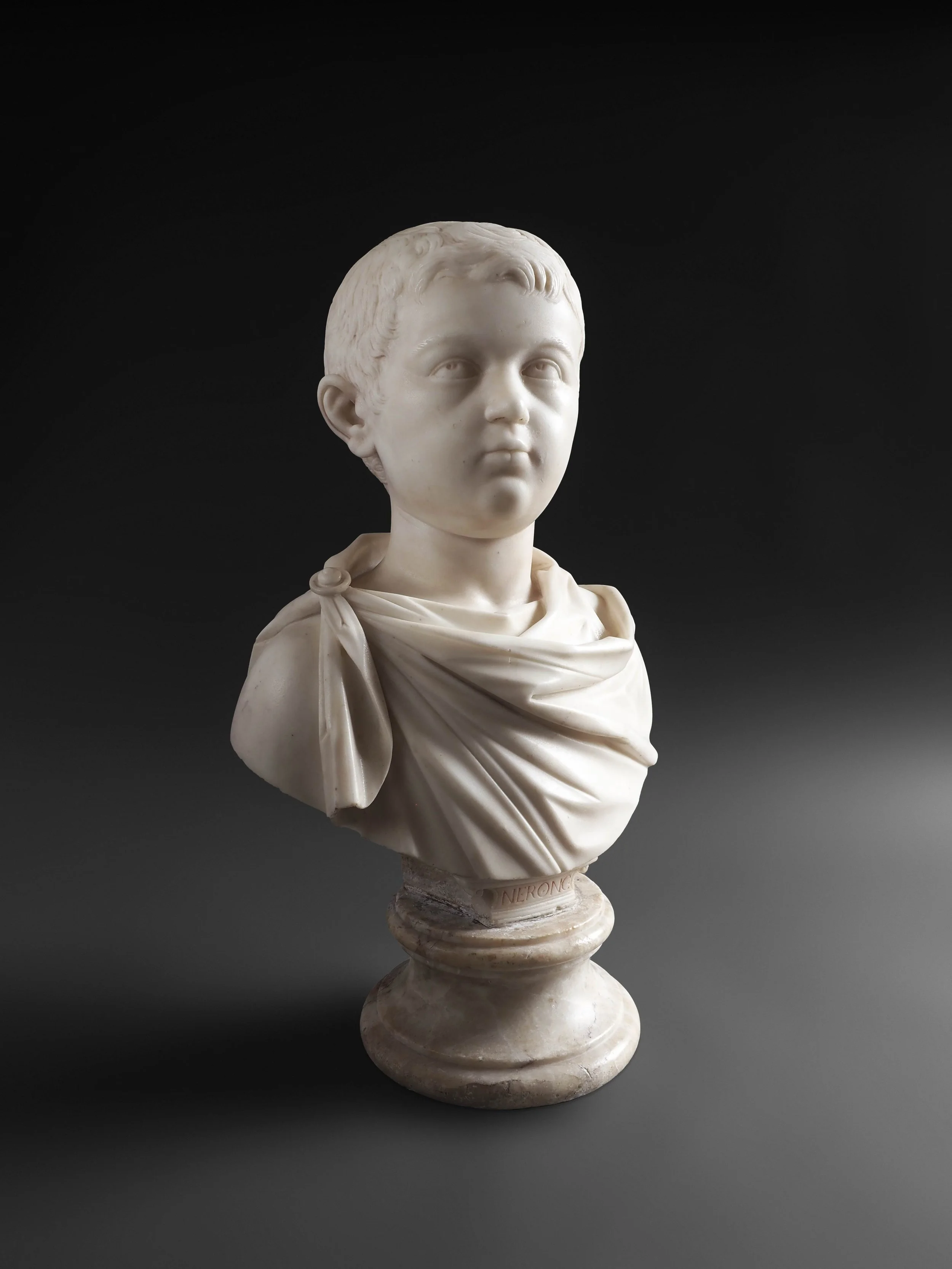
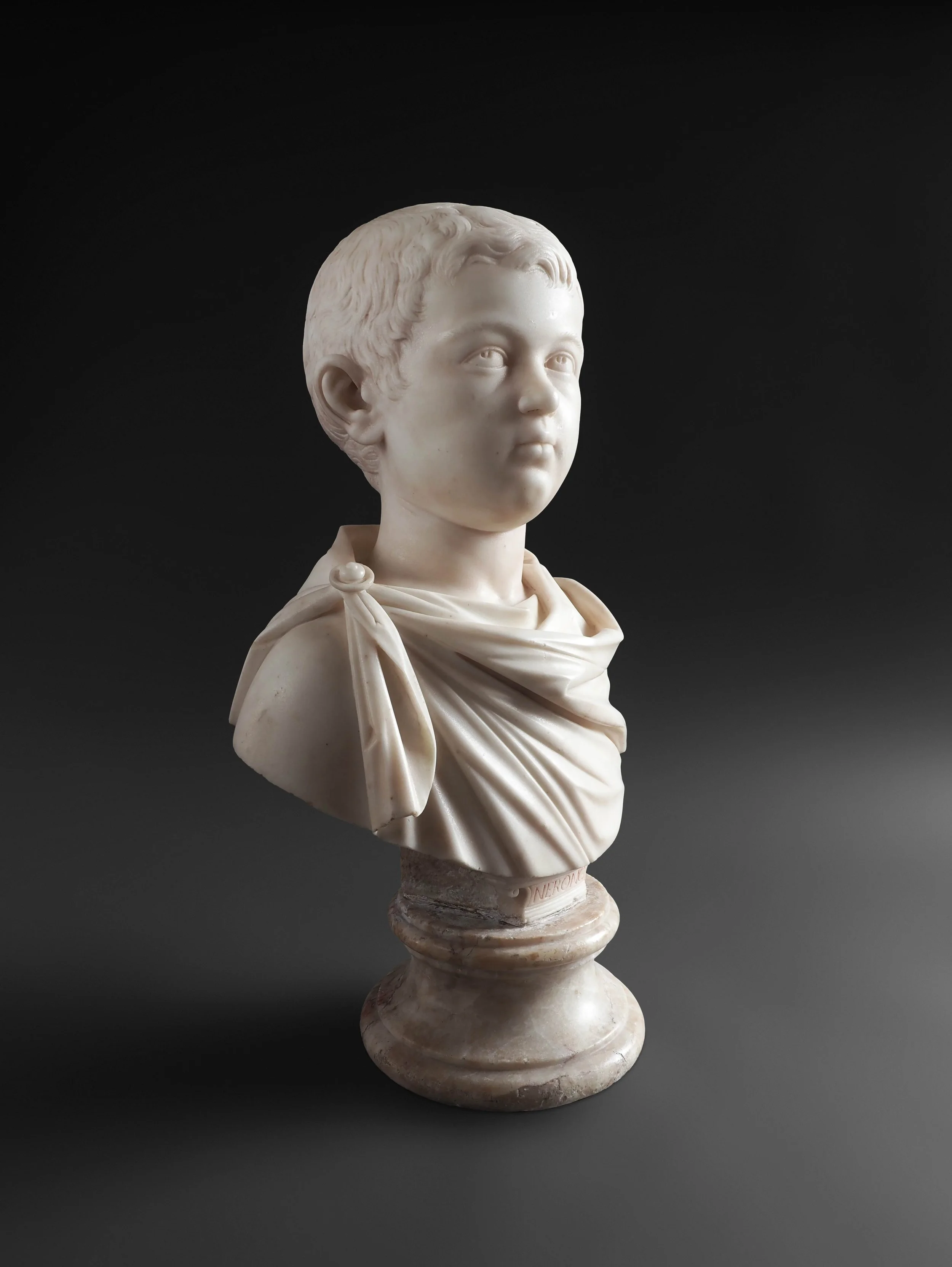

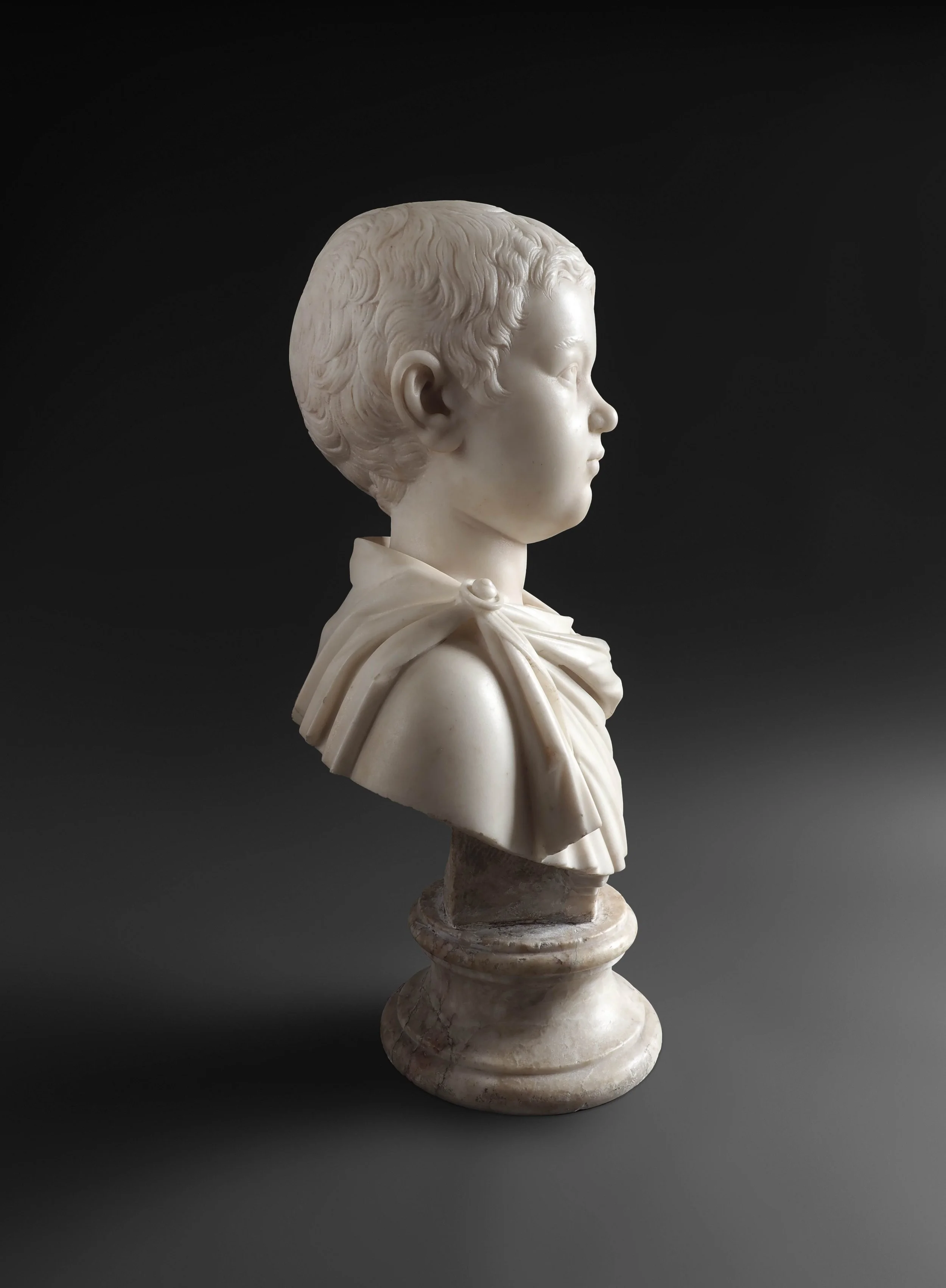
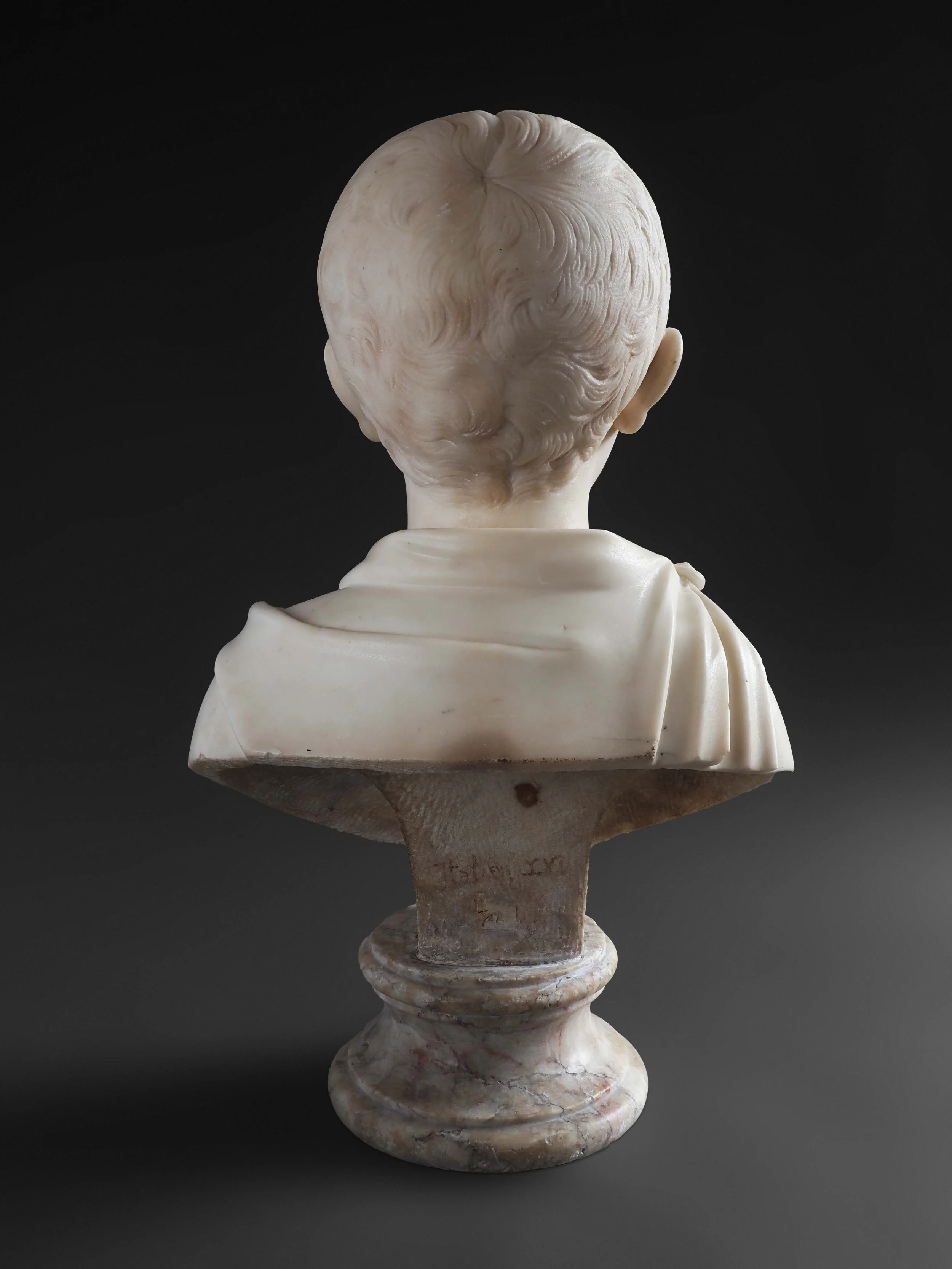
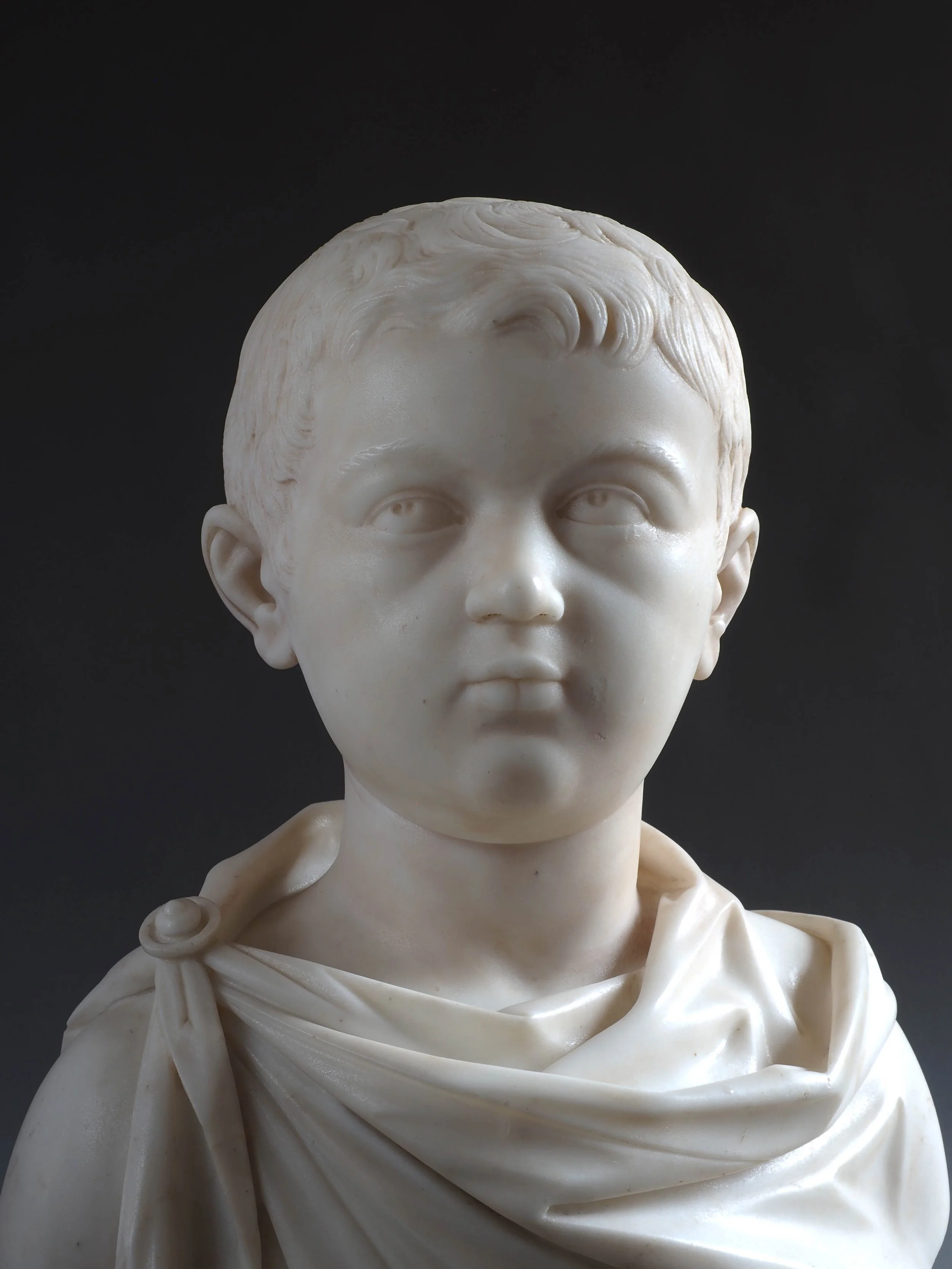



Demonstrating marble carving of the highest possible quality, this work is a fine, lively and direct copy of an ancient bust of a boy in Rome’s Villa Albani. At the time, it was believed to represent the four-year-old future emperor Nero. However, it may simply be a portrait of a young boy from an imperial or patrician family. The bust and the Villa Albani was owned by Cardinal Alessandro Albani (1692 - 1779) - the nephew of Pope Clement XI, who was considered to be the most ambitious and learned private collector of antiquities in Rome. The Cardinal employed Bartolomeo Cavaceppi (c.1716 - 1799) as his restorer from 1734. This relationship was immensely fruitful and brought the sculptor many commissions from foreign tourists and other wealthy patrons. For these collectors, Cavaceppi both sourced and restored antique statues, but he was also engaged in making fine copies of the best examples of these in Rome - such as the present bust.
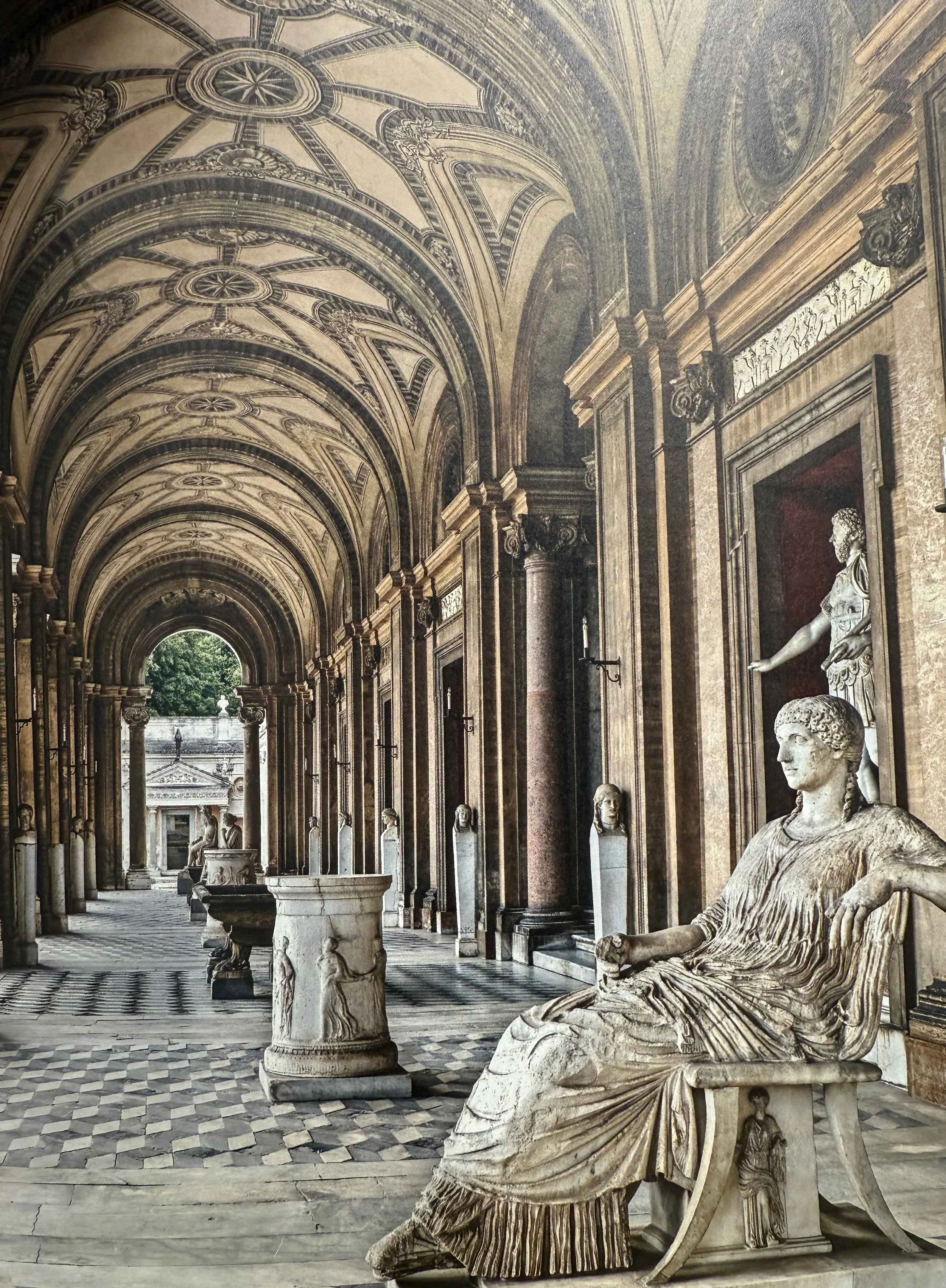
Villa Albani Torlonia
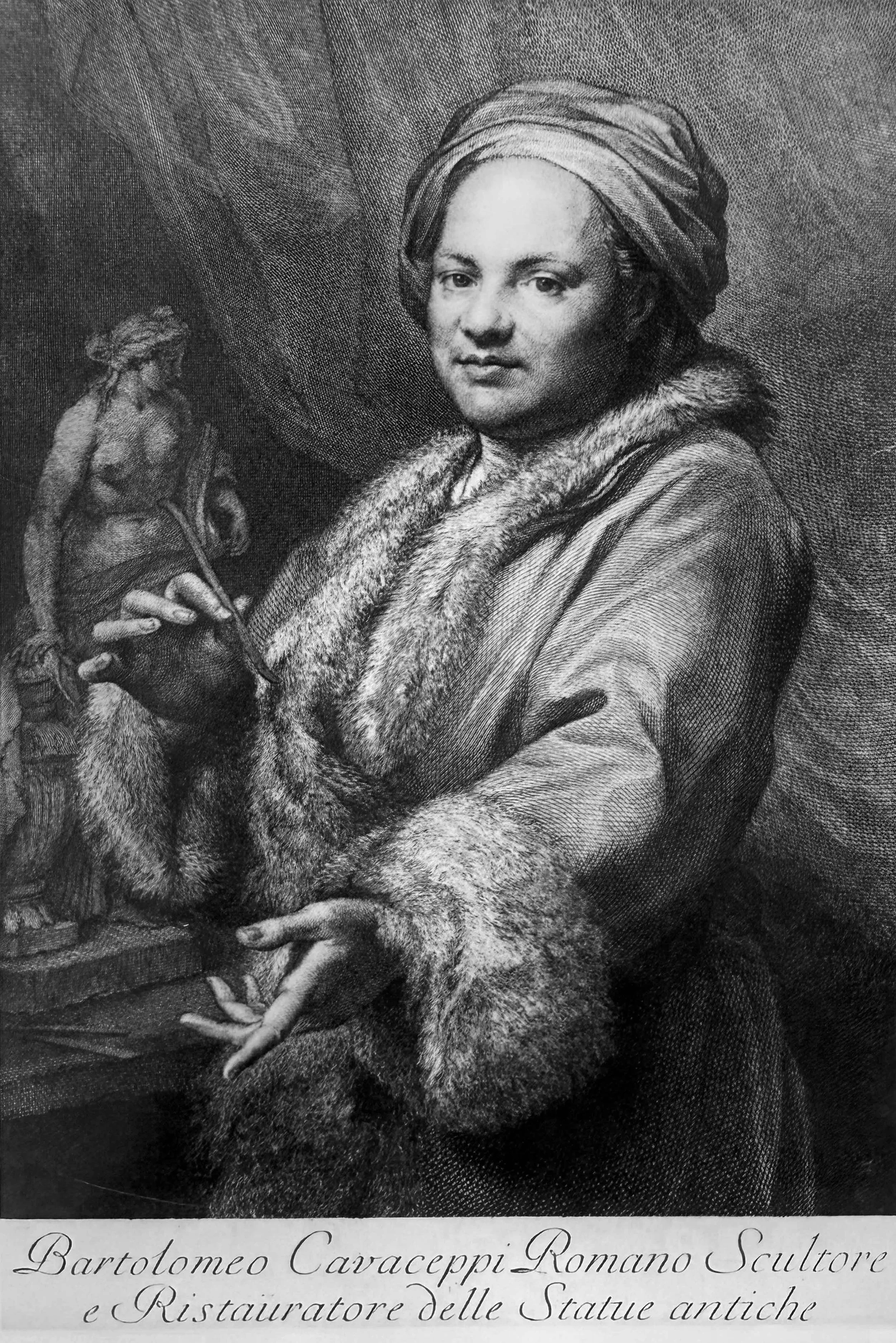
Bartolomeo Cavaceppi
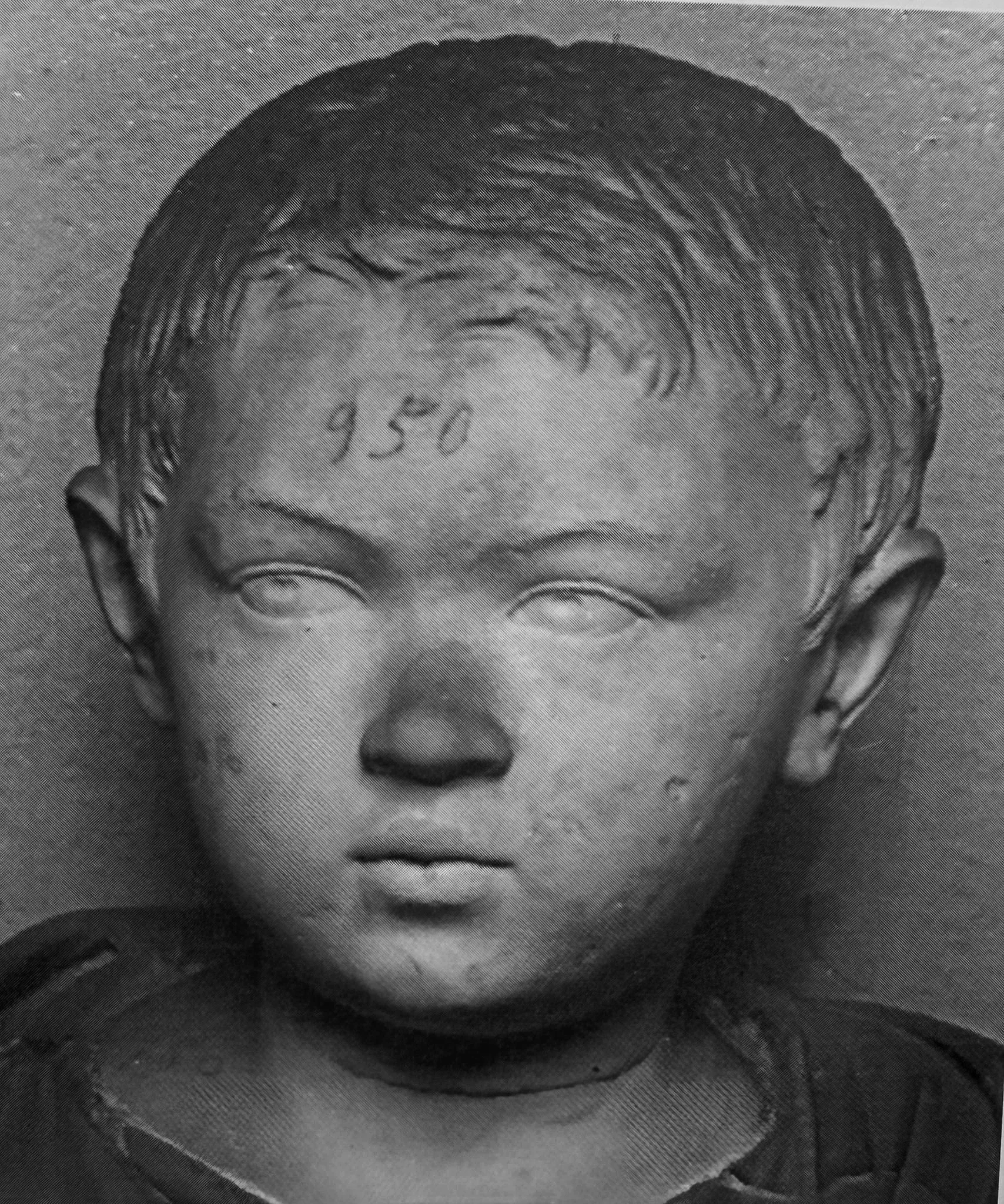
Bust of a Boy (possibly young Nero) at the Villa Albani
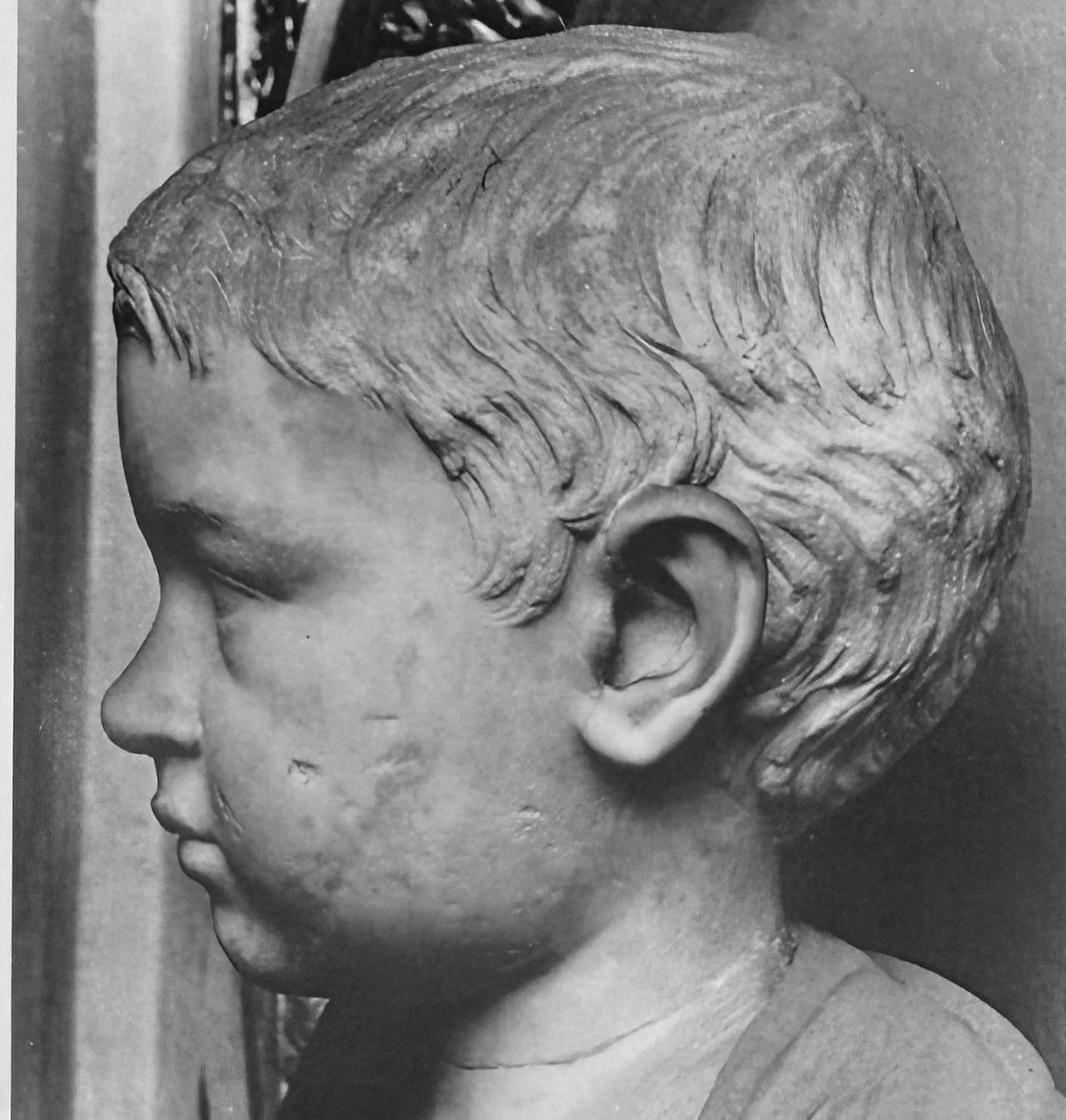
Cavaceppi likely restored the nose of the original bust of young Nero in the Villa Albani, before making this copy of it while he worked for the Cardinal. Cavaceppi’s method of doing so is perhaps revealed by the small number of tiny holes in the surface of the present bust, which appear to be marks made by the sharp metal point of a mechanical device. Cavaceppi was known for refining the design of a compassi di bronzo for taking accurate measurements of ancient sculptures and translating them to a block of marble or plaster. In her studies on Cavaceppi, Jennifer Montagu notes that his innovative tools and methods were a significant part of his reputation, making him indispensable to Grand Tour collectors and antiquarians. Indeed, a studio assistant is depicted holding such a device in an illustration of Cavaceppi’s studio, who incidentally, can be seen directing proceeding from a sedentary position at the bottom left of the scene.
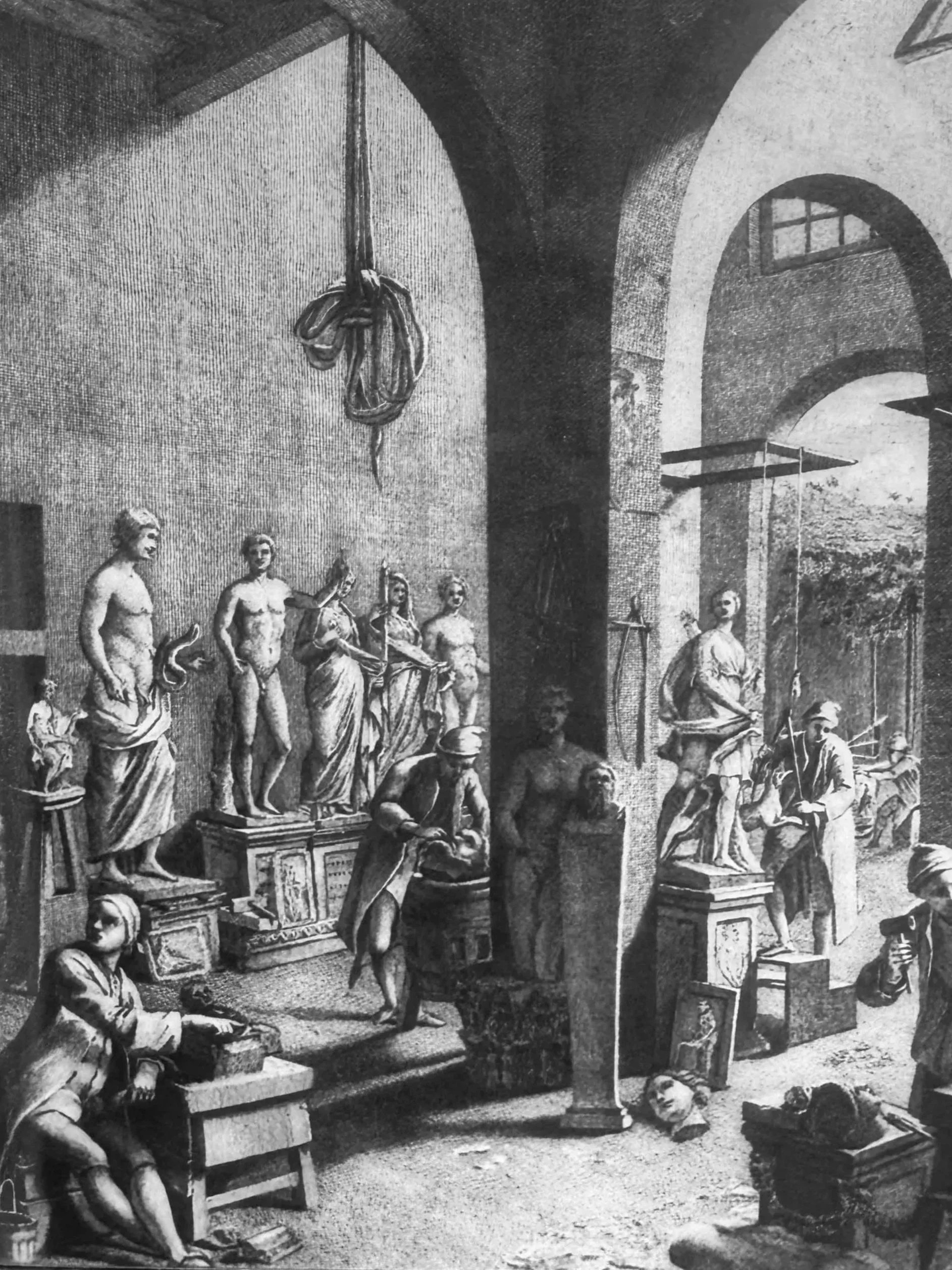
Cavaceppi's workshop

Cavaceppi’s pupil Carlo Albacini (1734 - 1813), recorded a bust of the ‘Young Nero’ in his master’s studio after his death in 1799. Furthermore, a ‘Busto di Nerone di Marmo’ was recorded again in a later inventory of Cavaceppi’s studio in 1802, together with an affectionately catalogued plaster cast of a ‘Busto di Neroncino’ i.e. a bust of a young Nero.
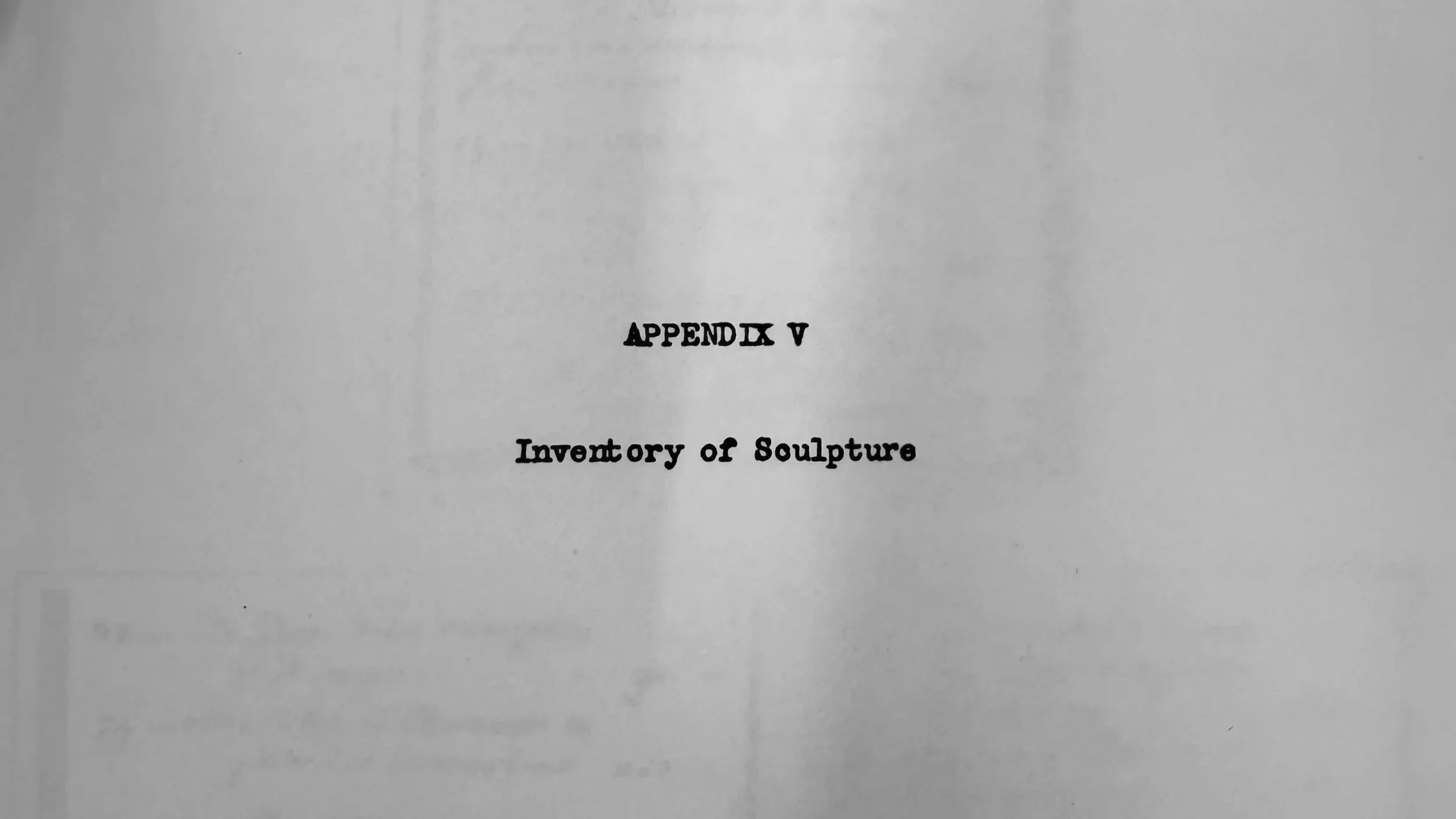
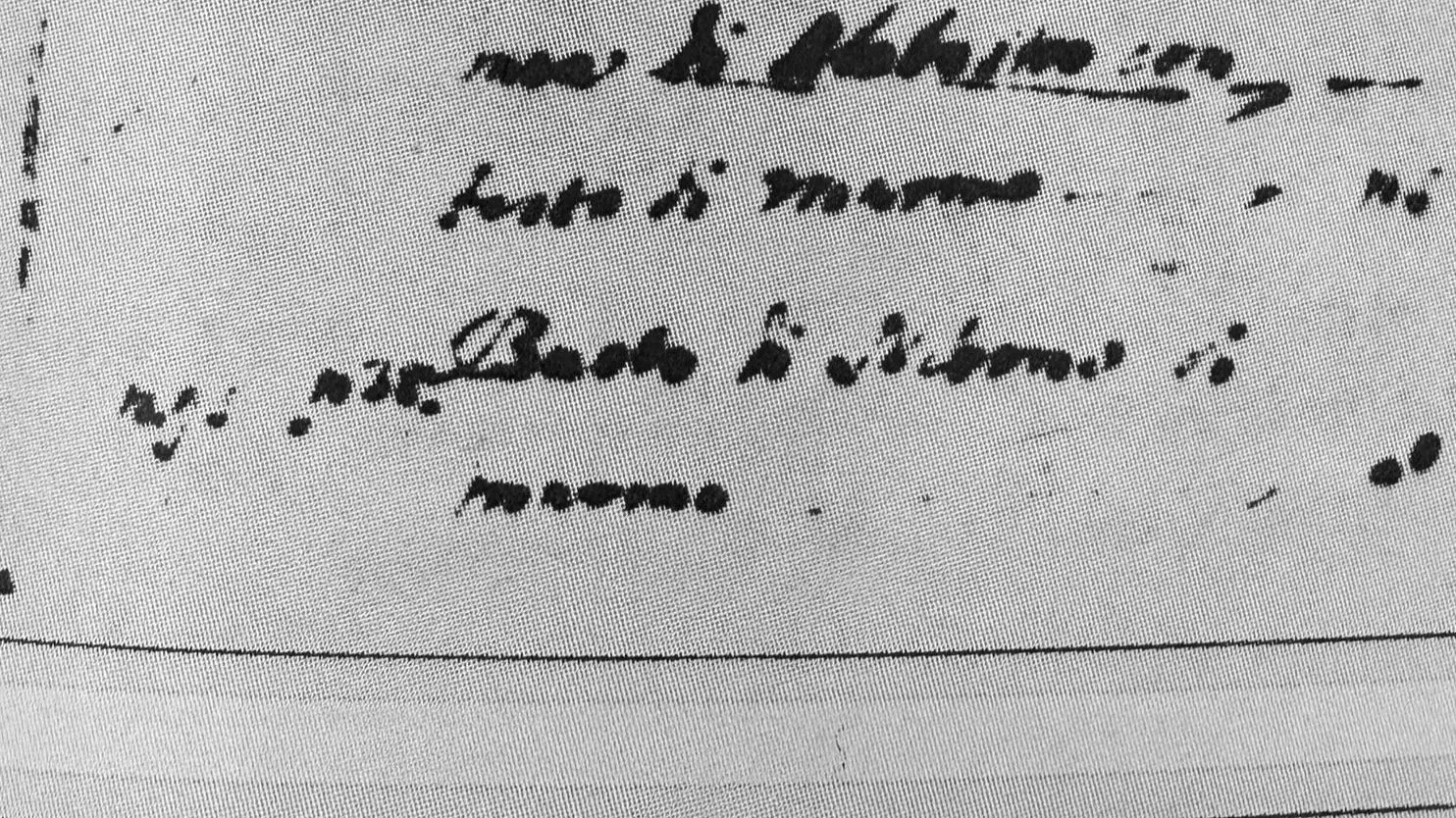
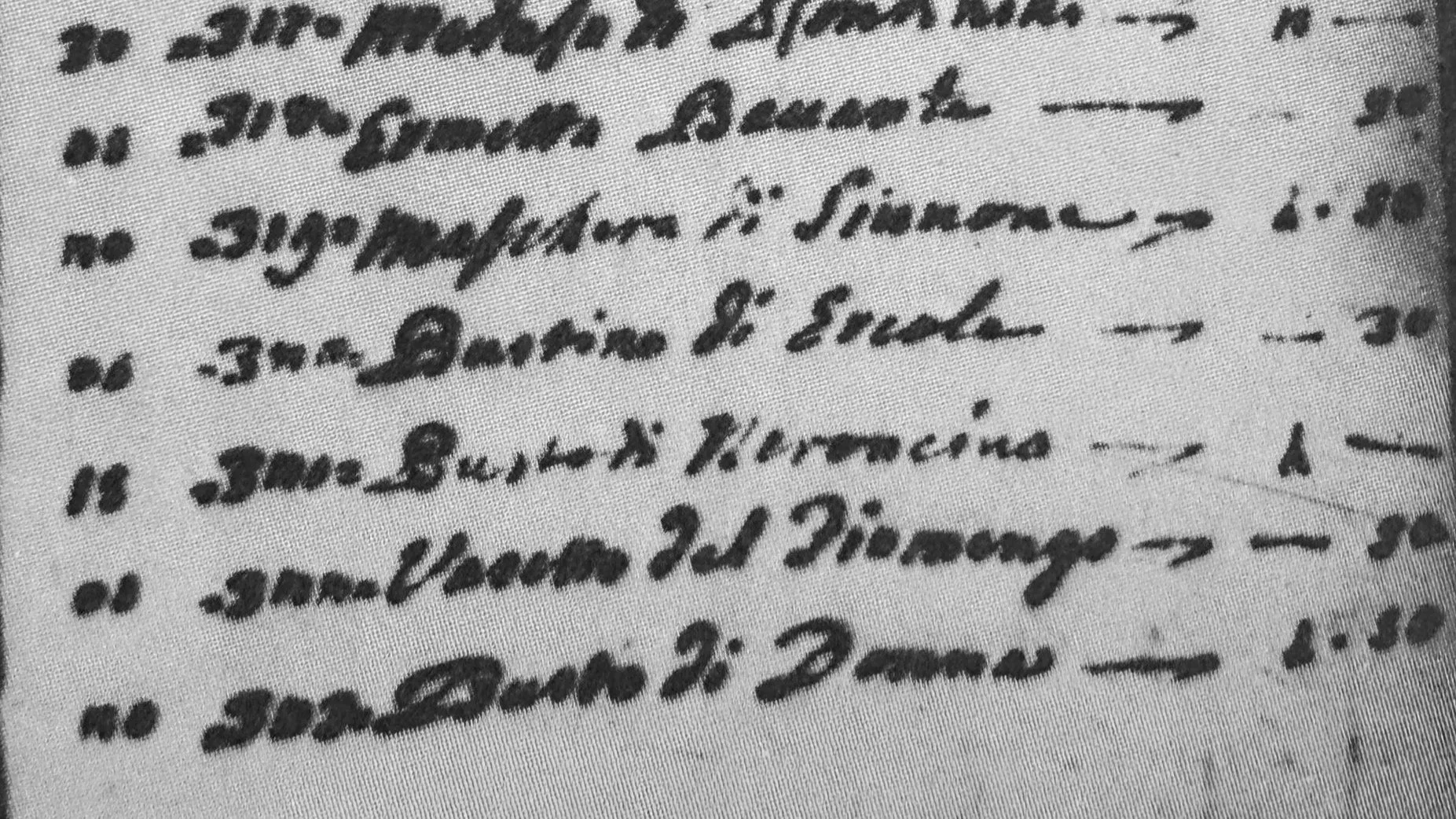
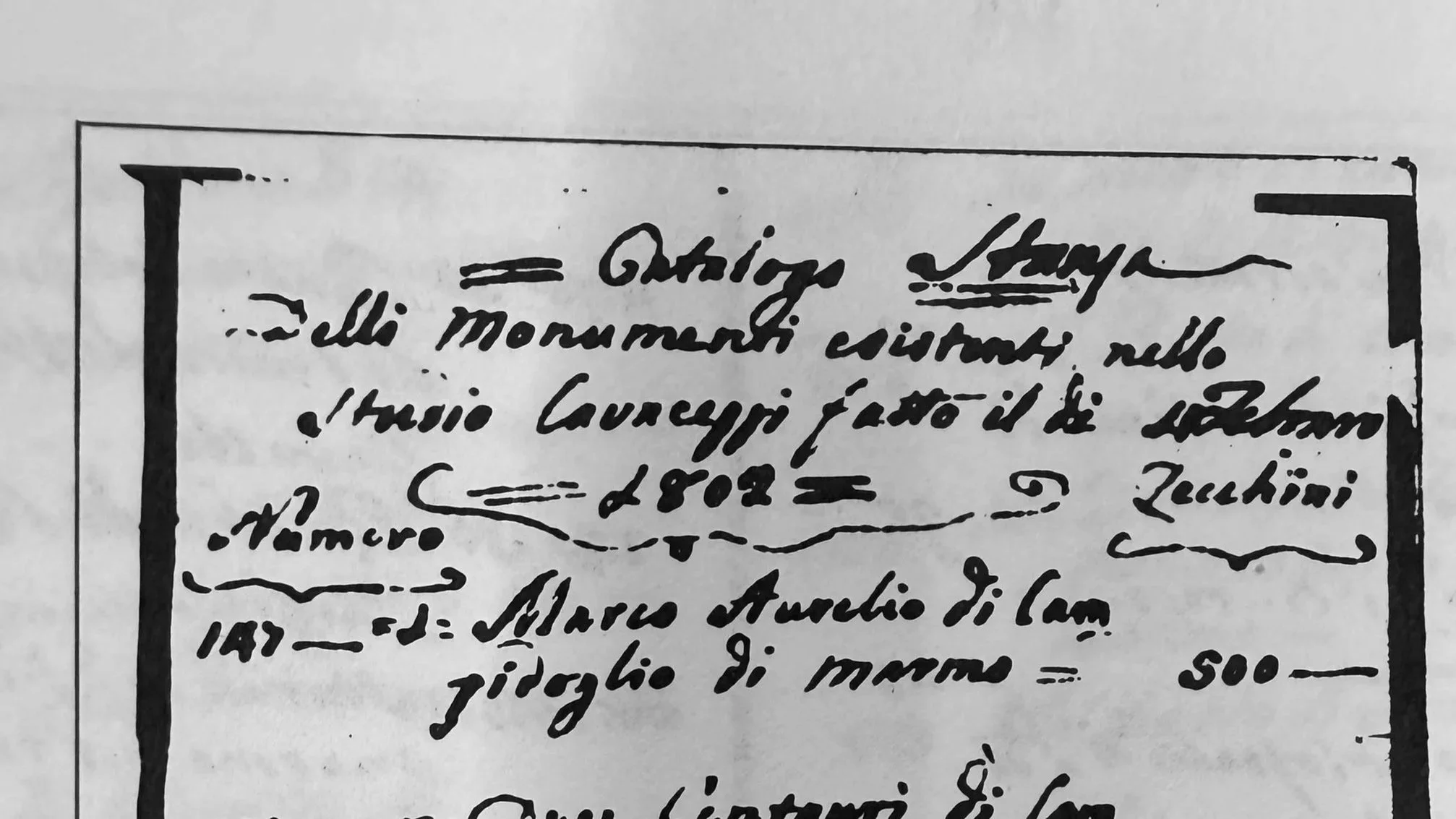
Remaining consistent with ancient practices, Cavaceppi rarely signed his works and in fact, was so talented that some of them were believed to be authentic antiquities at the time. Many of his works can be identified by he particular ‘c-scroll’ socle plate design (inspired by ancient examples), a detail which became indicative of Cavaceppi’s hand. Indeed, the present bust has a similar socle design to a signed work by Cavaceppi in the Getty Museum.
Cavaceppi also worked as a restorer for the Pope at the Museo Clementino. His fame was firmly established between 1768 and 1772, publishing three volumes of engraved images of works he had restored or possessed: ‘Raccolta d'antiche statue, busti, teste cognite’.
Selected bibliography
Barberini, Andrea, and Carlo Gasparri, eds. Bartolomeo Cavaceppi, scultore romano (1717–1799).Exhibition catalogue, Rome: De Luca, 1994.
Cavaceppi, Bartolomeo. Raccolta d’antiche statue, busti, teste cognite ed altre sculture restaurate da Bartolomeo Cavaceppi scultore romano. 3 vols. Rome, 1768–72.
Freedberg, David. “The Power of Copies: Cavaceppi, Canova and the Politics of Reproduction.” In The True Copy: Authenticity and Imitation in Art and Antiquity, edited collection.
Gasparri, Carlo. “Cavaceppi and the Restoration of Ancient Sculpture.” In History of Restoration of Ancient Stone Sculptures. Los Angeles: Getty Conservation Institute, 2003.
Gasparri, Carlo. “Cavaceppi, Bartolomeo.” In Dizionario Biografico degli Italiani, vol. 22. Rome: Istituto della Enciclopedia Italiana, 1979.
Gasparri, Carlo. Sculture antiche restaurate da Bartolomeo Cavaceppi. Rome: De Luca, 1990.
Howard, Seymour. “Bartolomeo Cavaceppi and the Origins of Neo-Classic Sculpture.” Art Quarterly 33 (1970): 300–326.
Montagu, Jennifer. “Cavaceppi, Bartolomeo.” In Grove Art Online. Oxford Art Online.
Montagu, Jennifer. “Cavaceppi’s Studio Practices.” In Journal of the Warburg and Courtauld Institutes
Montagu, Jennifer. Roman Baroque Sculpture: The Industry of Art. New Haven: Yale University Press, 1989.
Rossi Pinelli, Orietta. “Artisti, falsari o filologi? Da Cavaceppi a Canova, il restauro della scultura tra arte e scienza.” Ricerche di Storia dell’Arte 13–14 (1981): 5–42.
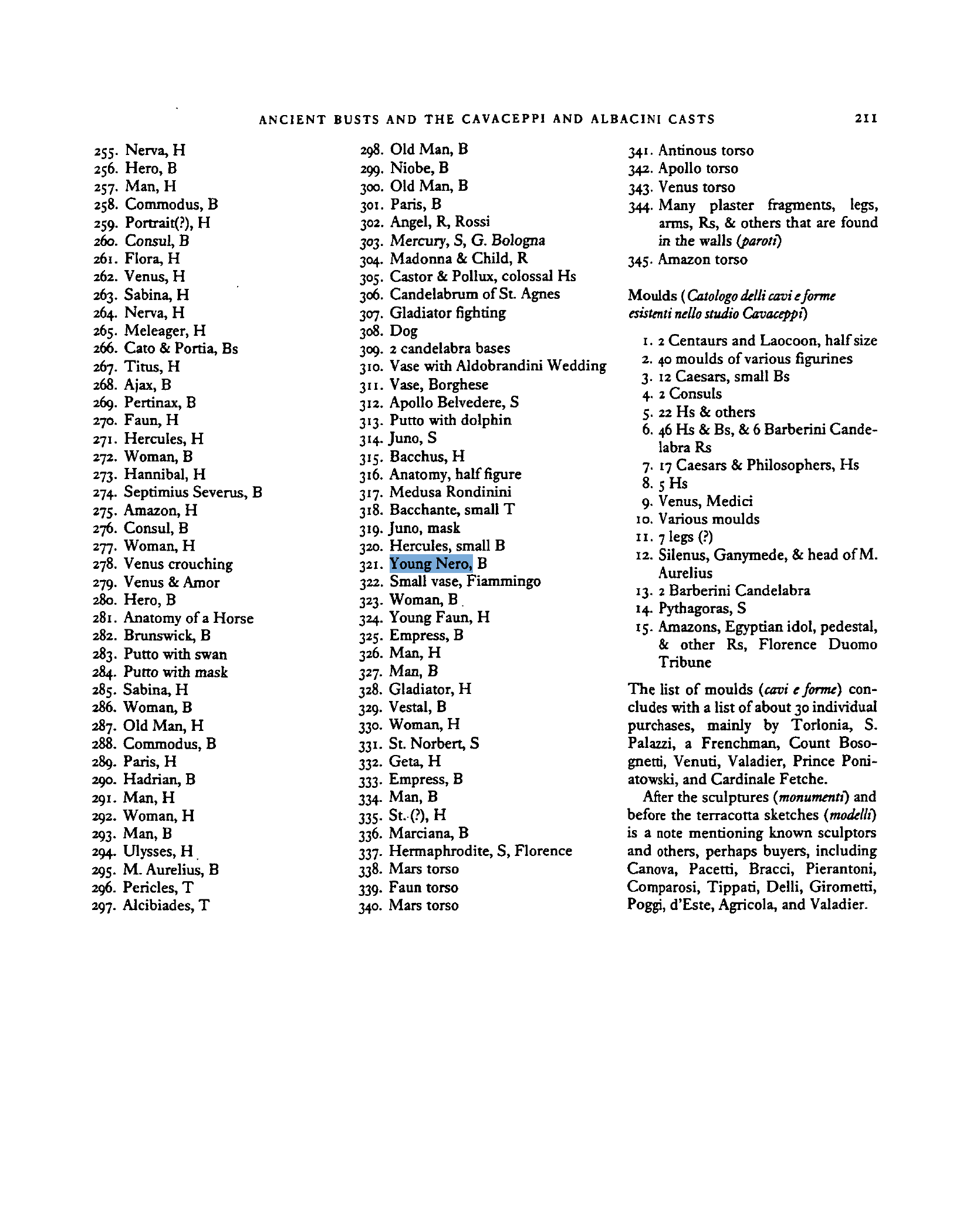
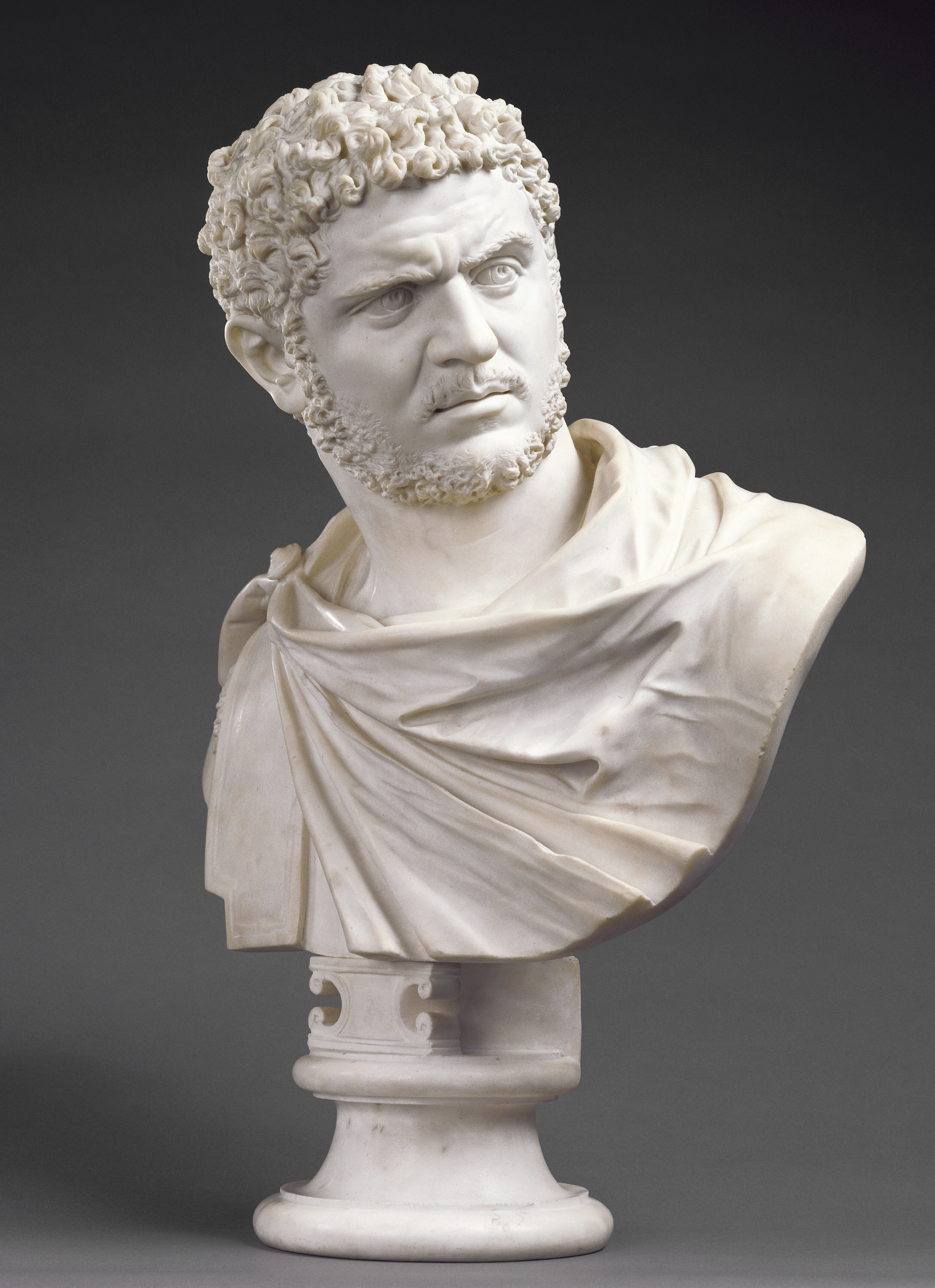
Bartolomeo Cavaceppi (1716/1717 - 1799), Bust of Emperor Caracalla, circa 1750–1770, White marble. Getty Museum
